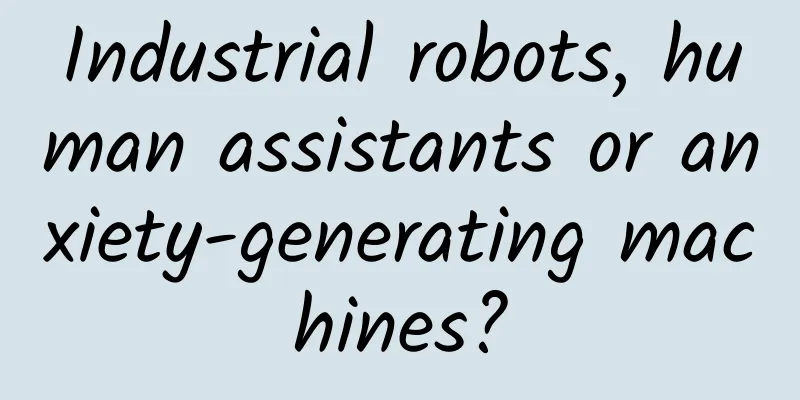|
The rapid development of the Internet has made the previously impossible vision a reality. The industrial production network composed of operators and industrial robots , thanks to the rapid dissemination of information and intensive control and management in the Internet , is contributing to the rapid development of China's secondary industry. Against the backdrop of industrial repatriation proposed by developed countries and rising labor costs in developing countries, the concept of “replacing humans with machines” has set off a new wave of development around the world. Industrial robots have received unprecedented attention and their development is unstoppable, becoming the research object of scholars in many fields such as industrial Internet and network communication. Changes and forecasts of global industrial robot sales from 2010 to 2017 As a major manufacturing city in China, Foshan's traditional industrial sector is in urgent need of transformation. Emerging technology companies represented by Wasu Robotics Co., Ltd. have injected new power into the development of Foshan's high-end equipment manufacturing industry through the research and development of industrial robots, achieving the goals of saving manpower, reducing costs and increasing efficiency. Taking "Xiaoxiong Electric Appliances" as an example, Wasu Industrial Robot Network has built a new automated production line for shredders. "The production line is 46 meters long and consists of 13 Wasu robots from multiple series." The number of people required for production after it is put into production has been reduced from 25 for manual production to 8 for intelligent production, and the cycle time has been increased from 23 seconds for manual production to 12 seconds for intelligent production. Such examples are widely found in today's industrial production, so what exactly are industrial robots? Let's explore it together! 01. What is an industrial robot? Industrial robots are highly automated machines that rely on industrial Internet technology to independently execute instructions and programming pre-introduced by humans, and have the ability to be reprogrammed and automatically controlled . They assist modern industrial production by completing highly repetitive or high-precision, high-risk tasks that humans are unable to perform, and are the representative product and epitome of the rapid development of the industrial Internet . As one of the main topics of the current industrial Internet industry, related companies also hope to open up emerging markets and expand global cooperation by improving industrial robot technology. Traditional industrial robots are mainly used in industrial fields such as electricity, chemical industry, machinery, logistics, etc., engaged in palletizing, welding, assembly, and testing . Supply share of industrial robots by field in 2015 With breakthroughs in technologies such as artificial intelligence, and the "Made in China 2025" plan proposed by the Chinese government, which prioritizes the development of intelligent manufacturing, industrial transformation with intelligent manufacturing as the core is quietly taking place. Against this background, intelligent industrial robots have broken through the limitations of some traditional robot production and operation, and have made significant progress in terms of application scope, process segmentation, operation accuracy, intelligent manipulation and management . The development and application of industrial robots plays a vital role in the successful transformation and upgrading of the manufacturing industry. Analysis of the "Made in China 2025" Plan Through the conceptualization of indicators, do you have a preliminary understanding of industrial robots? The following will briefly introduce the characteristics and development status of industrial robots. Let's read on! 02. Characteristics of indicator research Programmability On the basis of realizing production automation, industrial producers have put forward higher requirements for industrial robots, namely flexible automation . In short, it means that they can meet diverse market demands by modifying programming content according to rapidly changing production needs and environmental conditions, which is highly matched with today's personalized production characteristics . The original industrial robots were mechatronic automatic mechanical systems that could complete some operational tasks in the industrial manufacturing process. With the advancement of research and development technology, their mechanical structures have imitated the human body . For example, the application of robotic arms can also complete actions such as rotation, movement, transfer of objects, and detours like humans. Computers with control functions are similar to the existence of the brain , and the Internet connecting various industrial robots can be regarded as a nervous system or a blood system. The improvement of industrial robots by intelligence is reflected in the configuration and application of "biosensors" , such as force sensors, load sensors, vision, acoustic sensors, language functions, etc., which greatly enhances the self-perception and adaptation of industrial robots to the surrounding environment. Industrial robot "biosensor schematic" In order to reduce the production and use costs of industrial robots and adapt to changing market demands , most industrial robots have shown high versatility in performing different tasks. Enterprises complete the output of different objects by fine-tuning and reorganizing the end parts of industrial robots. The characteristics of mechatronics are also reflected in the definition, which is ultimately a combination of mechanics and microelectronics technology. Microelectronics technology gives intelligent industrial robots the ability to acquire information, memorize, understand language, recognize images, and make inferences in addition to mechanical automated production and autonomous control. This is also one of the important manifestations of the rapid development of the industrial Internet. 01 Current Development Direction of Industrial Robots Layout segmentation scene Segmented layout and market play an important role in accurately meeting demand. In order to further improve the professionalism and market share of industrial robots, industrial Internet-related companies are actively exploring emerging markets and innovating in specific markets . 2020 Industrial Robot Industry Segmentation Improve product indicators We will continue to improve the technical indicators of industrial robot products, break through traditional performance limitations and difficulties in multiple dimensions , solve specific industry problems, improve corporate competitiveness and thresholds , and seize the market with preferential deployment costs and high-quality after-sales services . Expand high-end customers With the advantages of safety, ease of use, flexible deployment and high flexibility, we have launched international multi-dimensional and high-quality cooperation and are committed to building an industrial robot application ecosystem . We use the agglomeration effect to provide customers with cooperation solutions that maximize their benefits, establish a position in the subdivided field, and seize the high-end market. Industrial Robot Application Ecosystem 02 Development Trends of Industrial Robot Industry The development trends of the industrial robot industry are mainly human-machine collaboration, autonomy, intelligence, informatization, and networking , and these five trends benefit from the rapid development of the industrial Internet. Autonomy and human-machine collaboration seem contradictory, but in fact they complement each other. The autonomous learning and control of industrial robots means that operators no longer need too many programmers and remote controls. On the basis of complying with basic principles, they will modify the application program, set and optimize the trajectory path according to changes in production tasks and conditions to achieve the desired effect. This greatly reduces the professional requirements for operators, enhances safety assurance, and creates greater possibilities for human-machine interactive collaboration. Mechanical intelligence is an irreversible trend in technological development. With the continuous development of intelligent technologies, such as recognition, sensing, analysis, and integration technologies , intelligent industrial robots are gradually able to informationize and digitize the massive amount of content obtained from the outside world and perform self-storage, integration, analysis, and application. The widespread use of industrial robots has made centralized network management more efficient . Industrial robots have developed from independent individual operations to interconnected and collaborative operations, jointly building an industrial robot Internet network. 03. Existing problems in the development of industrial robots: Industrial robot-related industrial regions and application fields are too concentrated, and the market utilization rate is low. At present, the use of industrial robots still has high economic and scientific research requirements, which has led to the application areas being mainly concentrated in the Yangtze River Delta, the Pearl River Delta, the Bohai Bay and the Chengdu-Chongqing area. In addition, considering the market cost factors and the imbalance between input and benefit feedback , only some large enterprises can afford it and there is an industry monopoly problem. Usage of domestic industrial robots in my country Insufficient core technology innovation capabilities and lack of innovative talents China's industrial robot R&D capabilities are insufficient, and its ability to master core technologies and creativity are lacking , which makes related industries highly dependent on imported core parts and unable to cope with sudden changes in the market or policies. It also severely restricts the development of local industries and their market share. Comparison of China's import and export value of industrial robots The industrial chain is incomplete and the collaborative innovation mechanism has not yet been formed. The industrial robot-related industrial system is not sound and complete, and the development environment and policies do not provide sufficient development premise and advantages for the industrial Internet industry. The vacant or fragmented industrial chain cannot meet the supply demand of parts, and the production of small batches increases the cost exponentially, greatly reducing the market competitiveness. Industrial robot industry chain structure Today, the core force of innovation in relevant industries in my country comes from students in universities or professional colleges, but closed research that lacks communication and collaboration often limits the generation of new ideas and the collision of thoughts, resulting in half the result with twice the effort. The formation of a collaborative innovation mechanism is crucial. Industrial support is limited and the policy environment needs to be improved The development of industrial robots has indeed received great attention from the government, but the current industrial support policies are mostly considered from a macro-development perspective . There is a lack of specific support policies such as improvement, incentives, project mechanisms, talent training, and core technology breakthroughs, which has greatly limited the support for the industry. 04. Countermeasures to industrial robot development issues Accelerate the improvement of the robot collaborative innovation system Actively establish cooperative relations with relevant foreign scientific research institutions, promote the introduction of high-tech talents through innovative service systems , and jointly promote the development of industrial robots. Establish a common technology research and development base for the robot industry, improve the development direction and planning of industrial robots in various regions according to the actual development situation in China, establish a collaborative innovation system of industry, academia, research and application, and realize the optimization and integration of innovation resources . "Two Institutes and One Park" Collaborative Innovation Ecosystem Architecture Encourage innovation in the financing and leasing model of industrial robots The CNNIC report also points out that investment and financing play an important supporting role in the development of China's industrial Internet. The leasing transaction model has also lowered the capital threshold for companies using industrial robots to a certain extent, improved the utilization efficiency and popularity of industrial robots, and effectively alleviated the above-mentioned problems of excessive concentration of industrial regions and application fields related to industrial robots and low market utilization rates. Distribution of robot types in investment and financing events in 2020 Build an innovative service platform of "Internet + Robot" "Internet +" integrates and utilizes idle resources through the sharing economy model. Taking expensive industrial robots as the sharing objects, combined with the industrial robot financing and leasing market, a new industrial robot utilization model is created, and an innovative service platform of "Internet + Robot" is built to improve the problems of idle resources and information asymmetry . Establish risk protection and real-time update mechanism for industrial robots Given the high initial price investment and risks of industrial robots, the country should promote and establish a comprehensive risk monitoring and early warning mechanism in real time to ensure the security of the industrial robot transaction process so that customers can purchase without worries. At the same time, industrial robots, both the main body and the application system, are characterized by rapid updates and replacements . Real-time update mechanisms are crucial to the long-term use of industrial robots, and also reduce the possibility of waste of resources due to idleness and abandonment. 03. Research finds social problems in the use of industrial robots Industrial robots with intelligent features can meet the production needs of enterprises to a greater extent. Unmanned autonomous operation also eliminates some difficulties that were previously difficult to overcome, such as the harm to the human body caused by harmful chemicals required for large-scale industrial production or messy production environments, and the psychological damage caused by long-term, high-intensity, repetitive labor. However, the large-scale application of industrial robots has also produced some social problems that cannot be ignored, such as the impact of the use of industrial robots on employment, the balance between costs and benefits, safety assurance of use, and ethical controversies surrounding their use ... Among them, the most concerning issue among the public is the impact of the use of industrial robots on employment. Labor and unemployment issues As the emerging core driving force of industrial transformation, industrial robots will reconstruct all aspects of economic activities . The first to be affected are low-skilled and low-level labor. Accelerating the process of replacing people with machines is an inherent demand and inevitable trend of industrial modernization production. It can also effectively alleviate the problems of labor shortage and labor-capital disputes . However, the apparent inevitable result of replacing people with machines is the dismissal of a large number of workers and the increase in unemployment rate, which will cause panic and anxiety in society to a certain extent. But is this really the whole picture? Research shows that industrial robots reduce employment in the manufacturing industry while increasing employment in the service industry , and the overall employment impact is uncertain. Based on the capital-skill complementarity hypothesis , the application of industrial robots can reduce unskilled employment while promoting skilled employment of the labor force, promoting the upgrading of the industrial structure , and the industrial structure shows an important mediating effect in the conversion relationship between the two. In summary, the use of industrial robots has a significant positive impact on employment, promotes the upgrading of industrial structure, and accelerates the development and popularization of industrial Internet. However, we should not rush into implementing low-level labor replacement. We need to give individuals time to improve their individual qualities in order to adapt to more stringent market demands . The intelligent trend of industrial Internet injects fresh power into economic development With the rapid development of information technology and the arrival of the intelligent era, technological changes centered on artificial intelligence are reshaping the industrial ecology on a global scale, injecting fresh blood into social and economic development, generating new development hotspots, and leading a wave of scientific and technological innovation. The intelligence of the industrial Internet has improved the level of automation in industrial production, freed up a large number of workers to perform higher-level tasks, and replaced low-economic-efficiency physical labor with innovative thinking . This has adjusted the proportion of China's industrial structure, and a large number of people have moved to the tertiary industry, which has created more possibilities for the optimization and upgrading of the industrial structure of the service industry as a whole, and further promoted the organic integration of artificial intelligence and the real service economy . Of course, intelligent industrial Internet products such as Xiaodu’s smart butler and automated furniture have also greatly improved people’s life efficiency and experience, and while improving social living standards, they have also created new economic hotspots with great prospects . The rapid development of China's Internet and the mismatch between the basic literacy of the people The rapid development of China's Internet has created conditions and foundations for social progress and the improvement of its international status, but it seems to be unable to match the overall basic literacy of the people today. There is a large gap between the public's understanding and mastery of the Internet and the Internet literacy corresponding to the development of the Internet . The shortage of technical employment labor reflected in the phenomenon of "machine replacement" is a good example. According to statistics, compared with some European and American countries, it takes longer for Chinese people to accept and adapt to new Internet technologies, and some users initially have a strong rejection mentality . The lack of national Internet literacy sometimes results in the inability to maximize the use of Internet development and research results in social life. What's worse, it will lead to the emergence of some thorny social problems, such as the prevalence of Internet fraud, addictive Internet use, cyber violence, online rumors and the spread of false information ... The speed of Internet development exceeds the level that the overall Internet literacy of today's users can bear, which makes the positive development of the Internet have a negative impact on individual life. In order to adapt to the rapid changes of the Internet and keep pace with it, it is imperative to improve the Internet literacy of the masses. The core of Internet literacy is to learn to look at the phenomena and problems in the development of the Internet with a critical eye, think hard, rather than blindly accept or reject the Internet as a new major force in social development , and cultivate the ability to understand and correctly use the extensive resources of the Internet in different forms. The rapid development of the Internet has reshaped every aspect of people's lives. Whether industrial robots are a powerful assistant in human production or a source of anxiety is a matter of opinion. Let us look forward to the new era of intelligent manufacturing represented by industrial robots. References: [1] Shi Kangli. A brief analysis of the application of industrial robots in industrial engineering [J]. Electronic Components & Information Technology, 2021, 5(4): 174-175. [2] Liu Yicai, Gao Jun. Research on the current status and countermeasures of the industrial robot industry development[J]. China Business Review, 2021(18): 174-176. [3] Kang Qian, Lin Guanghua. The impact mechanism of industrial robots on employment[A]. Soft Science[C], Nanjing, 2021: 20-27 [4] Cai Xiaojun. The impact of innovative development of artificial intelligence on economic development and suggestions [A]. Roundtable Forum [C], Shandong, 2021: 147-148. [5] Wang Wen, Niu Zedong, and Sun Zao. Service industry under the impact of industrial robots[A]. Statistical Research[C], 2020: 54-65 |










